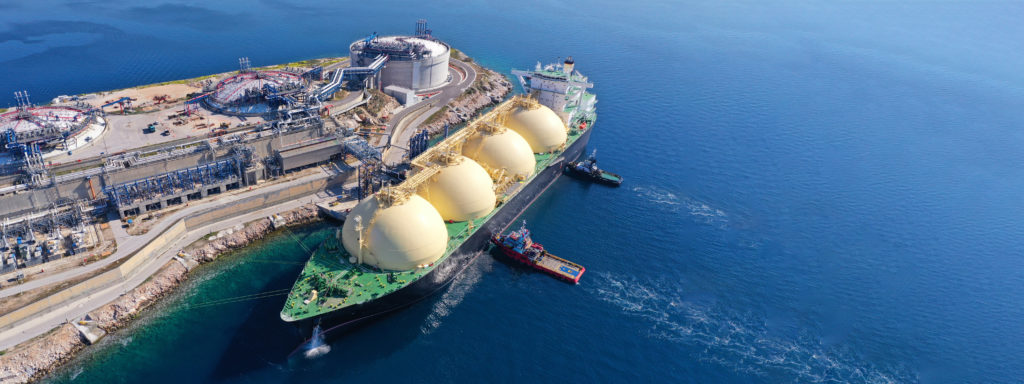Advancing ambitions: Paving the way for Canada’s liquefied natural gas (LNG) leadership
The race for global LNG dominance is ongoing, with fierce competition

In recent years, global natural gas use has shifted dramatically, with liquefied natural gas (LNG) demand soaring. From 2020 to 2022, global gas consumption jumped 64%, doubling LNG trade, partly because of a 15% drop in pipeline trade after Russia’s invasion of Ukraine. The LNG market now includes 20 exporters and 48 importers. Over the last five years, LNG demand rose by 13% and is predicted to increase by another 70% by 2040.
Asia’s LNG demand is surging, expected to rise by 42% by 2030, offering opportunities like South Korea’s coal-to-gas plant conversions. The U.S. leads 2023 LNG exports with 11.9 bcf/d, supplying 60% to Europe and 27% to Asia, which is vital amid tensions with Russia. Australia, the second-largest exporter, faces future supply growth concerns, opening doors for nations like Canada. Qatar, exporting mostly to Asia, is the third-largest exporter. Despite sanctions, Russia remains the fourth-largest exporter, focusing on LNG infrastructure to reach new markets.
Canada is up and running, with its first facility expected to export in 2025 and numerous other projects in the works
Canada is nearing its first LNG exports with eight projects in development, totaling potential investments of over $100 billion and 50 million tonnes LNG per year (mtpa) in exports. The flagship LNG Canada project in Kitimat, 85% complete, aims to start in 2025 with a capacity of 14 mtpa. Cedar LNG, targeting three mtpa, recently announced a positive investment decision, with plans to operate by 2028. Other projects like Woodfibre LNG and Ksi Lisims are working towards net-zero emissions, with operational goals around 2027-2028, while Tilbury Phase 2 expands existing facilities and Port Edward LNG shows the potential for quicker, smaller-scale developments.
We must leverage our competitive advantage and accelerate future growth
Canada offers key benefits for the Asian LNG market, including shorter shipping routes, competitive costs because of a colder climate, and a low emissions profile. Canadian LNG travels half the distance compared to the U.S. Gulf Coast and is up to 1.6 times closer than Qatar, depending on the destination. With the world’s lowest emission intensity for LNG projects, Canada’s location further cuts transport emissions by 60%, aligning with Asia’s environmental, social, and governance (ESG) agendas.
Natural gas, a key transition fuel, emits 45% less greenhouse gas (GHG) than coal and 30% less than oil. Despite global coal phase-out efforts, its use grew by 1.4% in 2023, especially where renewables are scarce. Boosting Canadian LNG exports could cut emissions by 181 mtpa, almost like taking 41 million cars off the road. Canada’s vast gas reserves, technical expertise, skilled labour, and liquefaction infrastructure enhance its competitive edge. Despite these advantages, Canada is projected to supply a meagre 5% of global natural gas demand by 2030.
Regulatory headwinds are preventing faster LNG development progress
The regulatory frameworks governing Canadian LNG projects at the federal and provincial levels create significant disadvantages for companies seeking project approval in Canada relative to other jurisdictions. One primary challenge is lengthy approval timelines — taking approximately 19 months longer than in the U.S.
Delays and hurdles led to the cancellation of Petronas’s $36 billion project in 2017 and influenced Warren Buffet to withdraw from Energie Saguenay’s $9 billion project in 2020. These instances underscore the pressing need for Canada to address regulatory inefficiencies and enhance stakeholder engagement to foster a more conducive environment for LNG project development.
Eighteen LNG export facilities have been proposed in Canada since 2011, and we are only now nearing the start-up of our first LNG export facility, LNG Canada, 14 years after its original announcement. While the U.S. has approved and built several facilities within 3 to 8 years. Germany’s “LNG Acceleration Law” highlights a more efficient approach, completing a terminal in just over 9 months.
It is incumbent on Canadians not to squander LNG’s massive economic impact on future generations
Canada’s GDP per capita has been declining compared to other advanced economies, leading to an affordability crisis, with a growing gap from the U.S. since 2010. To boost economic growth, Canada needs to approve more investments, particularly in energy infrastructure like the Trans Mountain Expansion, which could generate 800,000 person-years of employment.
The proposed LNG projects could add over $7.4 billion yearly to the economy for 30 years, create 100,000 jobs annually, and provide over $6 billion in wages and other in economic benefits for Indigenous Peoples.
And it is more than just economics: Europe urgently needs our gas to reduce its dependency on the Russian aggressor
Europe’s energy security has been at risk since Russia’s invasion of Ukraine, with Russian gas exports to Europe down 40% in early 2022, the lowest in decades. Europe increased its LNG import capacity by 34% to compensate, benefiting suppliers like the U.S. and Qatar. Yet, U.S. export permit pauses and Persian Gulf tensions threaten supply. Russia still provides 20% of Europe’s gas, adding to the insecurity. Canada’s LNG presents an opportunity for Europe to secure a clean and reliable alternative to Russian natural gas, but export infrastructure deficits and lack of long-term strategy delay its potential to meet Europe’s needs.
So, what does this all mean and where to next?
Canada has a chance to boost LNG exports, especially with the U.S. pausing new licenses amid climate policy revisions. To seize this, Canada must expand capacity, streamline regulatory processes akin to Germany’s efficient “LNG Acceleration Law,” and build strong partnerships with Indigenous communities for sustainable and mutually beneficial development. If Canada acts on these fronts, its LNG production could leap from 3.3 billion m3 in 2025 to 55.1 billion m3 by 2039.
Dr. Lance Mortlock is a managing partner, energy and resources at EY Canada. This article was written with support from Colton Cuckow.
Comments